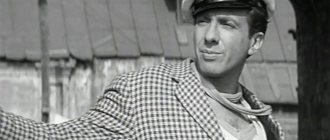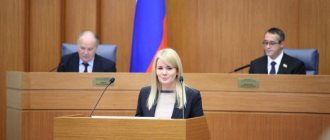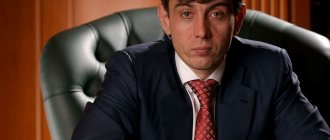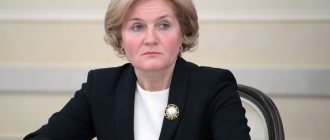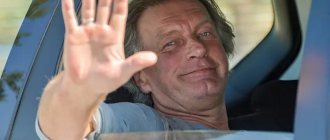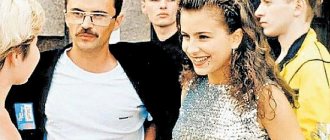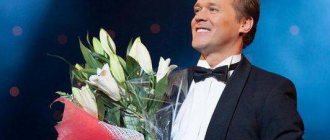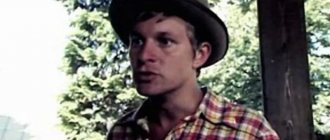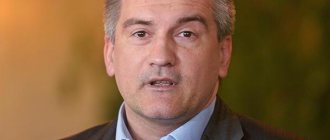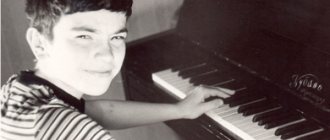Biography of Sergei Korolev
Sergei Pavlovich Korolev is a legendary Soviet designer who made an unprecedented scientific and technical breakthrough and gave the world space, the creator of rocket technology.
In the photo: Sergey Pavlovich Korolev
His legacy is difficult to overestimate. But he did not receive fame during his lifetime; his name was kept secret for a long time. Yuri Gagarin was applauded by the whole world, and the genius who ensured its launch watched the parade in honor of the flight not from the main stand, but on TV. He could have become a Nobel laureate - for launching a satellite for the first time in history and for human flight into outer space. However, Nikita Khrushchev did not disclose the name of the creator of the “starships” when nominating candidates, declaring that “their creator was the entire Soviet people.”
Today, space objects, a city in the Moscow region, many institutions and streets bear the name of Sergei Korolev, and thanks to the existence of space satellites, there are navigation systems available to every motorist, mobile phones that allow you to call anywhere on Earth, the Internet available in remote corners of the planet, televisions , broadcasting channels from all over the world.
early years
The great space conqueror was born on January 12, 1907 in Zhitomir, in the north-west of Ukraine, into the family of teacher-philologist Pavel Yakovlevich, a native of the Belarusian Mogilev, and Maria Nikolaevna, a native of the Ukrainian Nizhyn. Soon they moved to Kyiv.
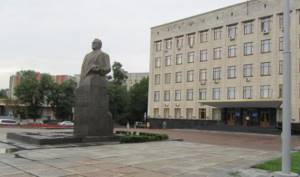
Zhitomir is the birthplace of Sergei Korolev
When my son turned 3 years old, his mother began studying, and he began to live with his grandparents in Nizhyn, where he saw an airplane fly for the first time. It was at this moment that his interest in aeronautics arose. At the age of five, he independently glued a model of an airplane, at six he watched with admiration the record group (of three aircraft) flight Kiev-Oster-Kozelets-Nizhyn-Kiev, led by military pilot Pyotr Nesterov, and demonstrations of the capabilities of the machines and flying skills of the aviator Utochkin.
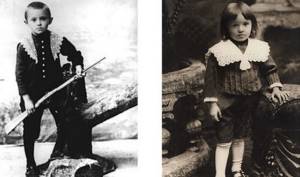
Sergei Korolev in childhood
In 1914, the parents took their son to Kyiv. In 1916, their marriage was dissolved, and a year later Seryozha was already living in Odessa with his mother and stepfather, an engineer. The situation in society was tense due to the outbreak of the Civil War, and the boy studied the school curriculum at home. He did not abandon his passion for aviation technology - he constantly disappeared at the seaplane base of the port, tried to be useful to the mechanics, and took to the skies.
Education
Since 1922, Sergei became a student at a construction and trade school, which provided a high level of knowledge - its graduates were accepted into universities without entrance examinations. In 1923, together with his stepfather, who helped him translate articles from aviation magazines from foreign languages, Korolev joined the Aviation Society, began giving specialized lectures and reports, and organized a gliding section at the plant. At the same time, he prepared a project for his own K-5 aircraft.
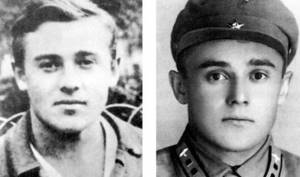
Sergei Korolev in his youth
In 1924, the young inventor became a student at the Kyiv Polytechnic University, where he showed extraordinary abilities, built gliders, achieving maximum flight range. He also began attending gliding instructor courses.
After the abolition of the aeromechanical direction at KPI in 1926, he transferred to the department of aeromechanics at the Moscow Higher Technical School. He now showed the greatest interest in studying aircraft piloting, the possibilities of exploring the stratosphere, and high-speed flights at high altitudes. Soon he began to combine training with work at the Design Bureau of the All-Union Aviation Association, and in 1928 he headed the team of its designers.
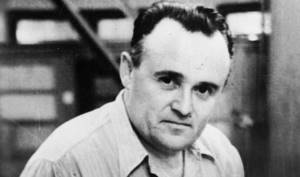
Sergei Pavlovich Korolev
In 1929 he was among the enthusiasts of the All-Union gliding competitions in Koktebel, earning a pilot's certificate. During the same period, after becoming acquainted with the works of Konstantin Tsiolkovsky on space and meeting with a brilliant scientist, he finally became infected with the idea of building rockets.
In 1930, he received a diploma as an aeromechanical engineer at the Moscow Higher Technical School, defending his work on the creation of the SK-4, which was subsequently put into production (its leader was Andrei Tupolev), as well as his qualification as a pilot at Osoaviakhim.
Institutes
At the age of seventeen, Sergei developed a project for the K-5 motorless aircraft. His invention was officially accepted by the competent commission and recommended for construction. Korolev decided to continue his studies in Moscow at the Air Force Academy. But they were accepted there only from the age of eighteen and after service in the Red Army. Since Sergei had neither one nor the other, he went to Kyiv, where he became a student at the Polytechnic Institute. He entered the Faculty of Aviation Engineering.
Study had to be combined with work to make ends meet. The guy got up at five in the morning, ran to the editorial office to get newspapers, and then delivered them on Solomenka, so he earned eight karbovanets. I had to do carpentry, start working as a roofer again, and earn extra money as a loader.
Nevertheless, Korolev still found time for the gliding circle existing at the institute. Here he worked enthusiastically and often stayed in the workshop all night, falling asleep in the morning on a pile of shavings. Quite quickly he became known as a jack of all trades; many of his designs participated in international competitions.

After two years of studying at the Kiev Institute, Korolev transferred to Moscow to the Bauman VTU, by which time his mother and stepfather had moved to the capital. Sergei began studying in a special evening group in aeromechanics, and at the same time continued to invent, build, and follow every new trend in aviation:
- 1926 - joined the student academic circle named after N.E. Zhukovsky, where lectures were given by scientists and famous engineers.
- 1927 - Korolev was enrolled in the Moscow Glider School, where he flew a lot, mastering new gliders. In the same year, he became acquainted with the works of Tsiolkovsky, after which he became interested in rockets and space flights.
- 1928 - began working at the aircraft plant in Fili.
- 1929 - graduate student Korolev practiced at the Tupolev Design Bureau and defended his diploma, in which he developed the SK-4 two-seat light aircraft. The meticulous and strict Tupolev supervised the graduation project and signed it the first time, which had never happened before. Later, according to the project, the SK-4 aircraft was built and tested.
By the time he received his diploma, Korolev had established himself as an aircraft designer with extraordinary abilities. In addition to the SK-4, he also designed the Krasnaya Zvezda and Koktebel aircraft.
Career development
In 1931, a young specialist worked at the Central Design Bureau of one of the capital's aircraft factories. A couple of months later he moved to the Central Aerohydrodynamic Institute. Then, as a senior engineer at TsAGI, he also began researching the principles of operation of jet engines in the GIRD organization created jointly with the inventor Zandler and with the assistance of Osoaviakhim, where under his leadership the first liquid-fueled ballistic missiles in the USSR were tested. As a result of achievements of this magnitude, he received the Osoaviakhim badge “For active defense work.”
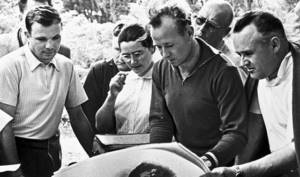
Sergey Korolev (far right) at work
In 1933, on the basis of their group and a specialized laboratory from the city on the Neva, the RNII of the People's Commissariat of Heavy Industry was established. At this institute, the 26-year-old design engineer received the post of deputy director for scientific work and the category of division engineer, that is, the rank of general. However, a year later, he was released from his high position for disagreeing with management on a number of work issues. He focused on developing advanced weapons, creating innovative types of missiles.
Difficult years
In 1938, the outstanding “space father” was accused of sabotage and terrorist activities. Korolev was working on a gunpowder winged torpedo with photocells, which could not be manufactured under current conditions. The designer was accused of overloading production with projects that were obviously unsuitable for the state; the damage was estimated at 120 thousand rubles.
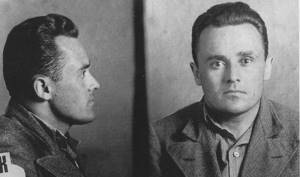
In 1938, Korolev was arrested and sentenced to 10 years in prison.
Korolev was arrested and sentenced to 10 years in prison with confiscation of property. During interrogations, he was beaten with passion until he suffered a concussion and a broken jaw. But he was considered “lucky”, because many of the leaders of the RNII were shot at that time.
In 1939, the designer was taken to Kolyma to dig for gold, where he almost died of hunger, cold and scurvy. His mother and friends worked to reconsider the case, and at the end of that year they achieved a decision to bring the scientist back to the mainland for additional investigation. On the way to Magadan in 40-degree frost, providence again intervened in the fate of the inventor when, frozen and hungry, he found a warm loaf of bread in the snow, and then could not get on the last steamship “Indigirka” before the closure of navigation. This circumstance, which upset him almost to the point of tears, actually saved his life - on the fourth day of the voyage, the ship sank with passengers and crew in a storm in the Sea of Japan.
Sergei Korolev: why the academician hated gold He reached the capital in March, was retried, received 8 years and was sent to a local special prison, where he was able to work in his favorite field of activity under the supervision of the convicted Andrei Tupolev. They produced progressive bombers, and Korolev, of his own free will, worked on the development of missiles. In July 1941 they were evacuated to Omsk.
Having learned about the design of missile systems in a similar design bureau at an aircraft plant in Kazan, where the chief designer was his former colleague at the RNII Valentin Glushko, the experimenter applied for transfer to Kazan. In the fall of 1942, he arrived in the Tatar capital and already in the winter presented a plan to create a jet accelerator for the Pe-2 dive bomber.
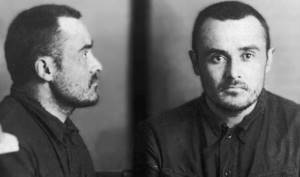
In 1944, Korolev was released early by order of Stalin.
In 1944, it became clear that victory in the war was close, and there would be no one to develop aircraft technology - all highly qualified designers were in prison. Then Lavrentiy Beria turned to Joseph Stalin with a proposal to early release a number of talented prisoners with their criminal records expunged. The Chairman of the State Defense Committee gave his consent, and Korolev received his freedom.
Place of birth: Zhytomyr, Ukraine
Activities and interests: design of rocket and space systems, manned astronautics, missile weapons, aircraft engineering
Biography of S.P. Korolev is a designer of rocket and space systems, and in the history of space exploration, the era of the first remarkable achievements is associated with his name. Under his leadership, many ballistic and geophysical rockets, launch vehicles and manned spacecraft “Vostok” and “Voskhod” were created, on which for the first time in history a human space flight and human entry into outer space were made. Rocket and space systems, the development of which was led by stood Korolev, allowed for the first time in the world to launch artificial satellites of the Earth and the Sun, flights of automatic interplanetary stations to the Moon, Venus and Mars, and make a soft landing on the surface of the Moon. Under his leadership, artificial Earth satellites of the Electron and Molniya-1 series, many satellites of the Cosmos series, and the first copies of interplanetary reconnaissance aircraft of the Zond series were created. In 1957, Korolev was awarded the Lenin Prize, he was twice Hero of Socialist Labor, awarded three Orders of Lenin, the Order of the Badge of Honor and medals.
Education, degrees and titles 1915, Kiev, preparatory classes of the gymnasium 1917, Odessa, gymnasium (later - a unified labor school and home education) 1926, Higher Technical School. N.E. Bauman, Moscow, Faculty: aviation (evening) department: aeromechanical engineer 1930, Moscow Pilot School: pilot 1958, USSR Academy of Sciences: academician 1922−1924, Odessa, construction vocational school 1924−1926, Polytechnic Institute, Kiev: transferred to Moscow Higher Technical School them. N.E. Bauman in connection with the closure of the institute Work 1930, Moscow, Central Aerohydrodynamic Institute (TsAGI): senior engineer 1933, Jet Research Institute RNII, Moscow: head of the rocket aircraft department, deputy head 1931−1933, Jet Propulsion Study Group GIRD, Moscow : chairman of the technical council (1932 - 1933) 1942−1946, OKB NKVD 16 at the Kazan plant: deputy chief designer of engines 1956−1966, OKB-1, Moscow region, Korolev: chief designer, director House 1906−1908, Ukraine, Zhitomir 1908−1914, Ukraine, Chernigov region, Nezhin 1946−1957, Moscow region, Korolev 1959−1966, Moscow
Facts from life • Returning from Kolyma to Moscow, in Magadan Korolev did not get on the Indigirka steamship (due to all the seats being occupied). This saved his life: during the passage from Magadan to Vladivostok, the steamship Indigirka was caught in a storm and sank off the island of Hokkaido. • In 1923, Korolev joined the organization “Society of Friends of the Air Fleet” (ODVF) and at the age of 16 he designed his first non-motorized glider. • The scientific supervisor of Korolev’s diploma project on the design of the SK-4 light aircraft was A.N. Tupolev. • Korolev could rightfully be proud of his achievements not only as a designer, but also as a glider pilot. The magazine “Aviation and Chemistry” publishes the following entry from the competition diary: “On October 15, 1929, there was a strong revival among the record holders. The duration of the flights was up to 3 hours, and the young soarer Korolev on “Koktebel” soared for 4 hours 19 minutes.” • He was arrested on June 27, 1938, visited the NKVD Internal Prison, Butyrki, then the Maldyak gold mine in Kolyma and Vladlag. At the request of Tupolev, he was then transferred to the Tupolev Sharaga. On July 27, 1944, Korolev was released early by a resolution of the Presidium of the Supreme Soviet of the USSR. • According to the memoirs of L.L. Kerber, Korolev was a pessimist and skeptic, and often described his prospects with the phrase: “They’ll slam you without an obituary.” • Before being sent to Germany to study captured German rocket technology, Korolev was given the extraordinary rank of lieutenant colonel (and he was soon promoted to colonel). Career officers called such wearers of shoulder straps (called up from the reserve, mainly from scientific fields) quite offensively - “trade union officers.” In the US Army, however, there were such people too, with the only difference: when an American “union” officer was dismissed from military service, he automatically lost his rank, remaining in the reserve or retired, for example, as a lieutenant, and not as a brigadier general. • Korolev was infuriated by the smell of laundry soap - it reminded the designer of prison. • Soon after the war, the British demonstrated the launch of a German V-2 rocket near Hamburg. The members of the Soviet military delegation were in military uniform, and Korolev was ordered to dress in the uniform of an artillery captain for camouflage. But the absence of orders and medals on Korolev’s tunic attracted the attention of a British intelligence representative to him. He asked Korolev: “What are you doing?” Korolev, without hesitation for a second, replied: “You see, I am an artillery captain.” To which the Englishman did not fail to jab: “Your forehead is too high for a captain. And you don’t have a single award, which means you weren’t at the front.” Korolev's modesty failed him - he did not wear the Order of the Badge of Honor on his tunic during his stay in Germany - but they also forgot to provide him with the awards that front-line officers had. • Urn with the ashes of S.P. The Queen is installed on Red Square in the Kremlin wall. There is a legend among cosmonauts: after the cremation of Korolev’s body, Gagarin and Komarov begged for part of his ashes in order to send it to the interplanetary station in a special container with the coat of arms of the Soviet Union to the Moon. • The largest formation (thalassoid) on the far side of the Moon, an asteroid, a high-mountain peak in the Pamirs and a pass in the Tien Shan are named after Korolev.
Discoveries • On August 17, 1933, the first successful launch of a GIRD rocket was carried out. • In 1936, Korolev managed to bring cruise missiles to testing: the anti-aircraft “217” with a powder rocket engine and the long-range “212” with a liquid rocket engine. • Developed a project for a guided cruise missile, successfully launched in 1939, and a rocket plane RP-318−1 with a rocket engine. • In 1948, he began flight design tests of the R-1 ballistic missile (analogue of the V-2) and in 1950 he successfully put it into service. • In 1953, carried out the first launch of the R-5, a Soviet liquid-fuelled single-stage ground-launched intermediate-range ballistic missile (MRBM). • In 1956, the R-5M missile, the first Soviet missile with a nuclear warhead, developed by Korolev, entered service. • In 1957, the R-7 two-stage intercontinental ballistic missile with a separating warhead fully completed its intended flight plan. • On October 4, 1957, the first artificial Earth satellite in human history was launched into low-Earth orbit. • In 1959, three automatic spacecraft were created and launched towards the Moon: the first and second - to deliver the pennant of the Soviet Union to the Moon, the third - to photograph the far side of the Moon. • On April 12, 1961, the world's first human flight in low-Earth orbit took place on the Vostok-1 spacecraft. • On August 6, 1961, the second space flight was carried out on the Vostok-2 spacecraft, which lasted one day. • On August 11-12, 1962, a joint flight of the Vostok-3 and Vostok-4 spacecraft took place; Direct radio communication was established between the astronauts. • On June 14-16, 1963, a joint flight of the Vostok-5 and Vostok-6 spacecraft was carried out. At the same time, the possibility of a woman flying into space was studied. • On October 12-13, 1964, the more complex Voskhod spacecraft was launched with a crew of three people of various specialties: a ship commander, a flight engineer and a doctor. • On March 18, 1965, during a flight on the Voskhod-2 spacecraft with a crew of 2 people, the world's first spacewalk in a spacesuit was made through the airlock chamber. • Korolev began to implement ideas about the development of a manned DOS (long-term orbital station). Its prototype was the fundamentally new and more advanced Soyuz spacecraft.
Rocket science
In 1945, a highly qualified specialist was awarded the Order of the Badge of Honor, he received the position of senior lecturer at the Kazan Aviation University and was seconded with the rank of lieutenant colonel to the GDR to borrow the best ideas for German rocketry designs. A year later, he was appointed leading engineer of the V-2 analysis institute established in Nordhausen, Germany. In 1948, he began testing the R-1, made according to their model. Since 1950, after eliminating the shortcomings identified during combat training launches, they were put into service and reliably defended the country.
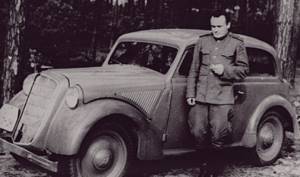
In 1945, Korolev was awarded the Order of the Badge of Honor.
Then Sergei Korolev was successfully involved in the optimization, design and testing of various versions of cruise missiles (two-stage, intercontinental, strategic, land-based, sea-based, etc.), coordinating the work of enterprises participating in their production, the actions of scientists to create them (as the head of the Council of Chief Designers) and strived to conquer outer space.
In 1955, together with his associates Mstislav Keldysh and Mikhail Tikhonravov, the scientist came to the top with a proposal to launch artificial bodies into near-Earth space. Their idea was approved, and in 1957 Korolev launched the planet’s first artificial satellite using a launch vehicle. This event was a tremendous success in the world, increasing the authority of the country.
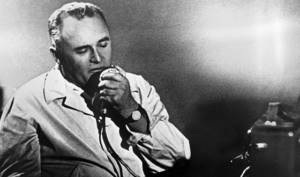
In 1957, Korolev launched the first artificial satellite of the planet.
Then the designer carried out work on spacecraft for scientific research of the interplanetary environment and applied tasks - a rocket was launched to the Moon, a USSR pennant was delivered to it, photography of the surface and the invisible side was carried out, and an interplanetary station was sent to Venus and Mars.
At the same time, research was carried out to prepare the first manned space flight on a manned spacecraft, which was brilliantly realized by the scientist in 1961 and became an epoch-making event for all mankind. During his lifetime, a number of other flights of domestic space pioneers were successfully carried out, including a group flight, the launch of research stations and the first manned spacewalk.
Cosmonautics
Military developments were for Korolev a condition for further space exploration. On October 4, 1957, for the first time in the history of earthlings, an artificial satellite was launched. A month later, on November 3, a second satellite was sent into orbit, with the dog Laika on board. On April 12, 1961, Yuri Alekseevich Gagarin flew into space.
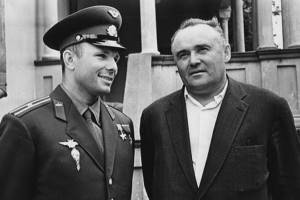
Sergei Korolev and Yuri Gagarin | Kommersant
Specialists from the Council of Chief Designers, created by Korolev, were involved in the implementation of these projects. During his lifetime, seven more flights of manned spacecraft were successfully carried out, satellites, space research stations and systems were launched.
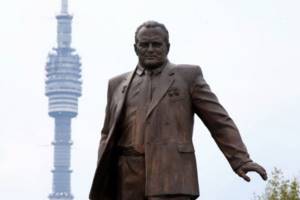
Monument to Sergei Korolev | Arguments and Facts
The life of the chief designer ended early, it happened on January 14, 1966. The cause of death was a surgical operation during which the heart stopped. After his departure, the pace of development of space programs decreased. Neither Russia nor the United States has produced a person equal to him in terms of personality and talent.
Personal life of Sergei Korolev
A genius who stepped over the edge of the unknown was twice bound by the bonds of Hymen. His first chosen one was his childhood friend Ksenia Vincentini, a native of Chisinau, who had Italian roots, and studied with him at a construction and vocational school. The wayward beauty did not show any desire to legitimize their romantic relationship for a long time. He sought her consent to marriage for 7 whole years, waited until she graduated from the Kharkov Medical Institute and worked as an assigned worker in the Donbass in Alchevsk. They married in 1931 during her business trip to Moscow.
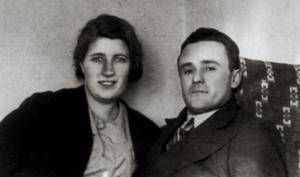
Sergei Korolev and Ksenia Vincentini
In 1935, the couple had their only daughter, Natalya, who in adulthood became a surgeon and doctor of sciences. When her husband was imprisoned on false charges, Ksenia had to work three jobs to support her daughter and have the means to support her husband. After the husband’s release, the spouses’ relationship was affected by his constant business trips and employment. In 1949 their marriage was dissolved.
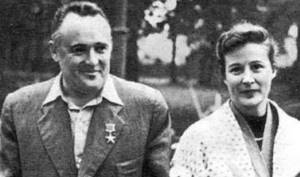
Sergey Korolev and Nina Kotenkova
The scientist’s second wife was Nina Kotenkova, a native of Izhevsk, a translator of technical documentation. He met her in 1947 at an interview when she was hired to serve at the research institute, where Korolev worked as chief designer. After his divorce they got married. The woman was the daughter of the commercial director of defense plant No. 8 in Podlipki, a graduate of the Moscow Pedagogical Institute of Foreign Languages. Her first husband was aircraft designer Vladimir Ermolaev, who died in 1944 from typhus.
Personal life
Sergei Korolev was married twice. He first married in August 1931 to classmate Ksenia Vincentini, and in 1935 she gave birth to his daughter.
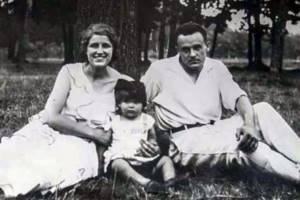
Sergei Korolev with his wife Ksenia and daughter | Day Online
In 1948, the family broke up.
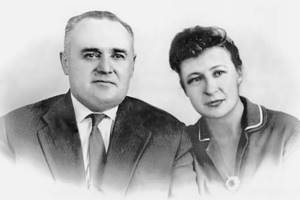
Sergey Korolev and Nina Kotenkova | Personalities
He met his second wife, Nina Ivanovna Kotenkova, who was a translator at NII-88, at work.
Death
The creative flight of thoughts of one of the greatest minds of the twentieth century was cut short by his premature death in 1966. Camp trials and incredible work pressures undermined his health. The doctors insisted on surgery to remove the polyps, and he agreed. But during its implementation a number of complications arose. The scientist’s heart could not stand it and stopped. The urn with his ashes rests near the Kremlin wall.
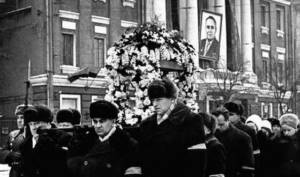
Funeral of Sergei Korolev
